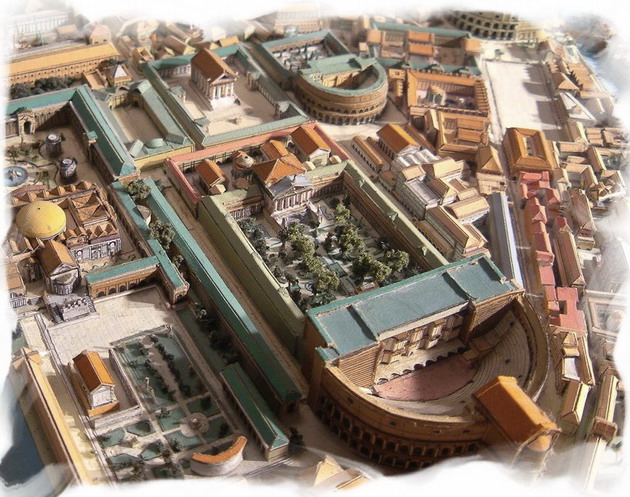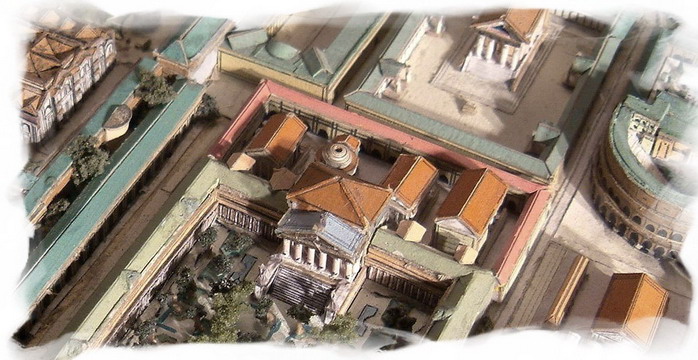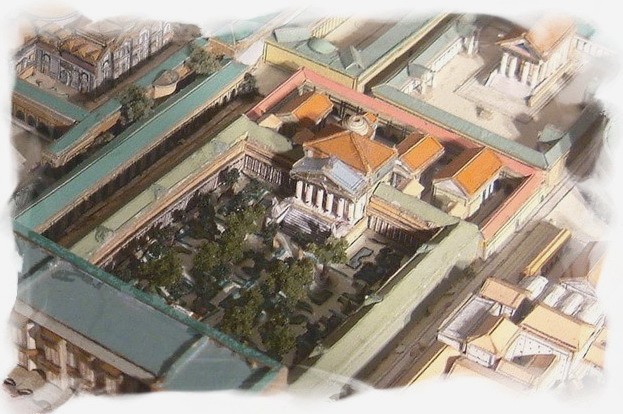Bird’s eye view
of the interior of the theatre. It’s in 55 BC that Pompey had this theatre erected,
which took his name. It was the greatest and none thereafter could equal it.
On the synthetic picture, you can see the great stairs that lead to the temple of Venus,
as well as the stage, composed of stacked rows of arcades

.
Actually, to escape to the censors who forbid this kind of entertainment, the formula of the theatre-temple allowed to get round the prohibition by including a temple.





